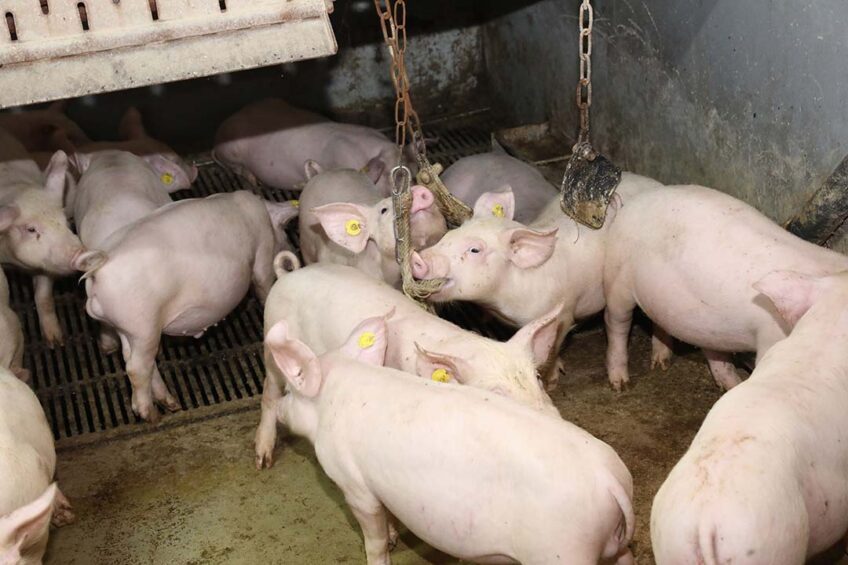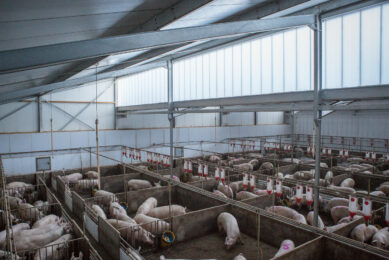Welfare – seen from the pig’s perspective

As we move forward in 2024 with the new Prop 12 legislation in place mandating specific standards for sow housing, the US industry has spent a considerable amount of time rethinking the design and layout of our current commercial production systems. What would pigs actually prefer? Welfare expert Dr Monique Pairis-Garcia shares some insights.
We often focus on designing a farm to ensure that it is economically realistic to build, efficient to run, and durable enough to handle the day-to-day wear and tear from pigs. However, we do not often think about designing a building based on the pig’s perspective and sensory capacity and should consider just exactly what the pig can see, smell, hear or taste.
Ensuring barns have good lighting in alleyways and pens will improve handling and movement of pigs
Pigs can see 310° and prefer blue
Pigs have better vision than humans and can see 310°. They can differentiate colours and it is believed blue is the easiest colour for them to identify. Pigs prefer well-lit areas and rely heavily on lighting to manoeuvre throughout an area. Ensuring barns have good lighting in alleyways and pens will improve handling and movement of pigs.
Pigs are sensitive to smell
Pigs are also very sensitive to smell and can taste as well as humans. They usde smell primarily for identification, whether that be for the sow to identify her own piglets or from a social hierarchy standpoint for pigs to recognise pen mates and higher-ranking conspecifics. Current research has been looking at opportunities to use this sense of smell to manage aggression during mixing or improve oestrus identification rates.
Pigs like sweet, avoid sour or bitter
From a taste standpoint, pigs prefer sweet tastes and avoid sour or bitter flavours. New products are available on the market to apply solutions with bitter flavours onto the tail of the pig to reduce tail biting which commonly occurs in the finisher phase and sweet flavours had been added to startup diets to encourage young pigs to start on feed.
Pigs do not like loud sounds
Lastly, pigs also have a similar hearing range as humans and are more sensitive to ultrasonic sounds greater than 20kHz, such as fireworks. Pigs can identify the location of sound better than most farm animals, and exhibit strong physiological responses to loud sounds as shown by an increased heart rate. There are also some studies that suggest exposures to higher frequency sounds can have long-term negative impacts on pigs, including increased aggressive behaviour and poorer immune response to disease. For more information on the impact of sound on livestock animals, please refer to a new 2023 publication from Poland.
Developing environments including the pig’s perspective
As we move forward into 2024 and begin the next stages of development for our farms, I encourage all producers to consider developing an environment that takes into account production and efficiency, worker safety and comfort and the pig’s perspective, paying particular attention the often-forgotten environmental conditions that can influence pig welfare.
The Pig Progress Newsletter
Sign up for our newsletter and receive all our need-to-know content three times a week.











